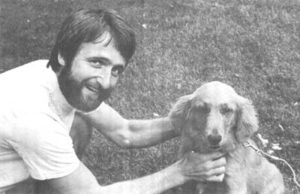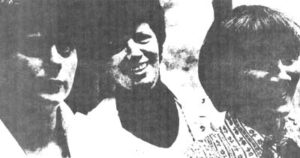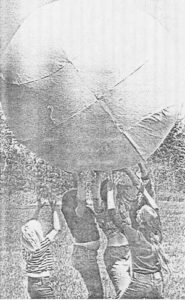Philip Weld, Jr.
- 1977

Fellowship Title:
- Role of Self Care in Health
Fellowship Year:
- 1977

Self-Care Magazine Gives Access to Healing Tools
“How many people practice self-care in the United States anyway?” the news re-writeman asked me. He had a copy of my first newsletter introducing the philosophy on self-care and he wanted a solid figure to nail it down for his lead sentence. I was disappointing. I didn’t know and could only reply that I had been told about 70 per cent of medical care in the country was self-care. Next time he calls I’ll give Tom Ferguson’s answer: “All of them, whether they realize it or not.” Ferguson, 34, editor of Medical Self-Care, a magazine he created and publishes at Inverness, Calif., is a dream for someone like me researching this relatively new field. He explained that the reason he could say all Americans practice self-care is that they brush their teeth and are starting to pay attention to proper ways to brush. They decide when to go to the doctor and which doctor to go to and that is self-care. They also decide which patent medicine or non-prescription drug to take which is self-care

Activated Patient – Or Taking Care of Yourself
Activated patient? The phrase sounds like something which might explode, as if you had a sleeping bomb that suddenly became unpassive, unlimp and willing to take part in its own health. To some doctors the activated patient program sounds rebellious. It teaches everyday folks everything from taking their own blood pressure to replacing commercial nose drops with a homemade salt solution. Said one suspicious doctor: “I object to the term. It implies that the patient should get into rebellion against the doctor.” But Dr. Keith W. Sehnert said he has known only one case of opposition to the program he started which has spread to 3,000 graduated patients in 37 states. A physician in Galveston, Tex., was reprimanded by his medical society for teaching it recently, he said. Dr. Sehnert’s definition of the activated patient comes from his book How to Be Your Own Doctor (Sometimes). It describes an individual “whose clinical skills and understanding of his health are such that he becomes an active participant in his own health care in contrast to the

Healing Arts Fair
Garlic and olive oil and plenty of hugs in the sunshine. They stick in my mind as keys to healing after three days of listening to workshops at the Second New England Healing Arts Fair in May in Greenville, N.H. The workshops covered everything from herbal healing and menstruation to body purification and diagnosis by iris examination (iridology). One workshop leader vowed that a man who couldn’t swallow was “fed” by attendants painting olive oil over his body enabling him to live eight years on the nutrients absorbed through his skin. I found that hard to believe, but he said it was true. Another workshop leader, known as Herbal Ed, used five cloves of garlic every morning in his breakfast tonic. He called garlic Russian penicillin and the most universal remedy in the world because it kills harmful bacteria and spares the friendly. Here is his recipe for those who want a combination of Dr. Stone’s liver flush and Vermont folk remedies for morning purification. 12 ounces Rejuvelac (water soaked 24 hours in fermented wheat
Self-Care in Health: A Movement?
Self-care, self-health, self-repair and self-healing books proliferate in the health sections of paperback bookstores. One self-care advocate, a professor of public health at Yale University School of Medicine, said he had counted 600 titles recently. In 1972 he had been unable to find a publisher for an article on the subject. A Boston newspaper survey showed that self-help books ranked side by side in popularity with books on meditation and making love how-to-do-its such as the Joy of Sex. Andrew Weil, a renegade physician who has spent five years studying alternate ways of healing, writes in the May/June issue of Quest magazine that people are fed up with the medical establishment and are forming a new popular health movement. Its growth recalls the 1830s movement that shook American medicine, he wrote. This April, I took a leave from my newspaper for a year to explore this growing interest in self-care in the United States and Canada and to take a look at prevention, patient education and patient power. A pediatrician in New York City at
